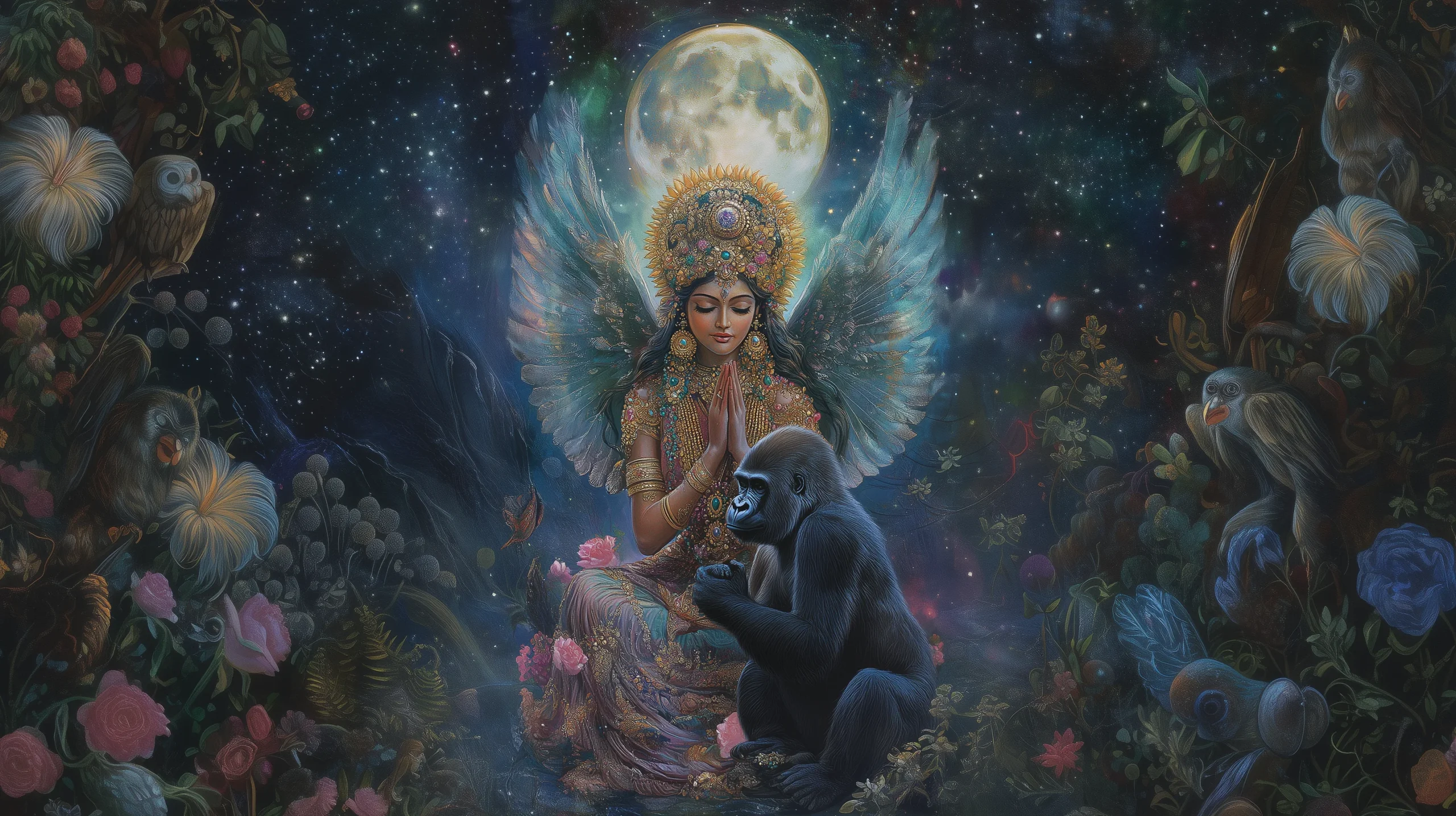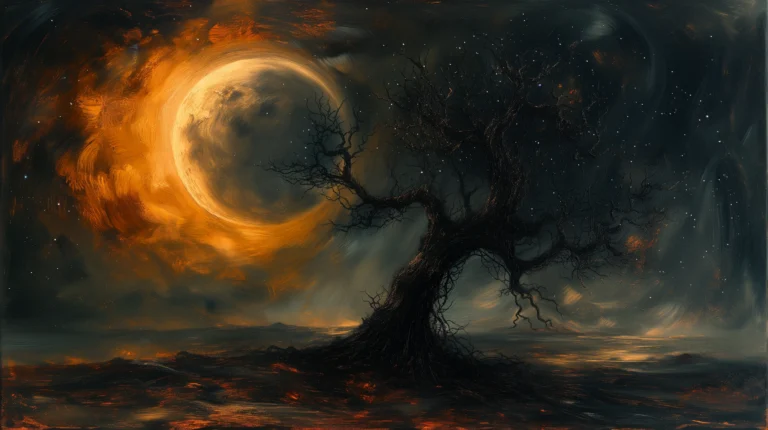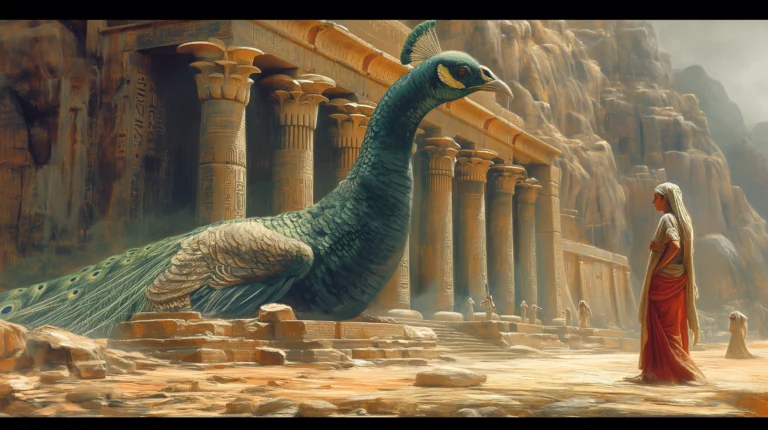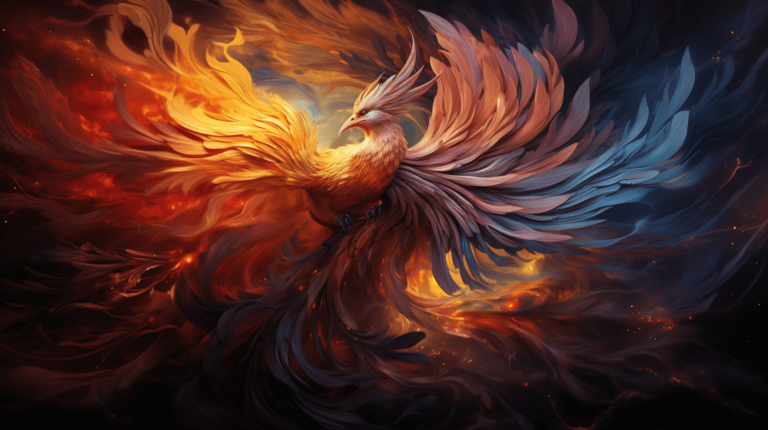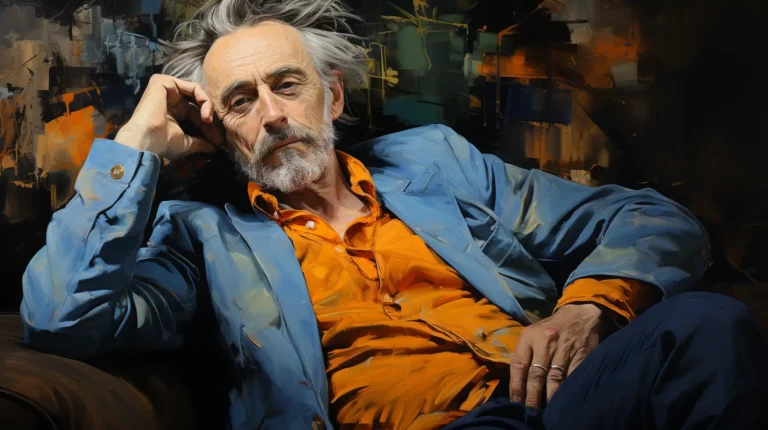Balancing Heaven and Earth: The Inner Alchemy of the Eagle and the Gorilla
Balancing Heaven and Earth
The Inner Alchemy of the Eagle and the Gorilla
Preface
Welcome, seekers of truth and navigators of the inner landscape. In the symphony of life, the human experience unfolds as a dance between opposing yet complementary forces: light and dark, the spiritual and the material, the ethereal eagle and the primal gorilla.
These two archetypes—majestic, powerful, and deeply symbolic—capture the essence of our struggle and our triumph. They mirror the dualities within us, the inner tug of war between transcendent aspirations and the very human pull of the body, ego, and raw emotion.
In ancient mythology and psychology alike, symbols are the language of the subconscious mind. Carl Jung famously said,
“Until you make the unconscious conscious, it will direct your life and you will call it fate.”
The eagle and the gorilla represent more than animals; they are mythic symbols embodying the soaring heights of spiritual pursuits and the grounding, sometimes overwhelming, weight of our primal nature.
To truly understand and balance these forces is the work of deep integration—the work of becoming whole.
As the Hermetic saying goes,
“As above, so below; as within, so without.”
This principle reminds us that the inner world shapes the outer reality. When unconscious forces remain hidden, they manifest in patterns that seem beyond our control.
But when we bring these forces to light, we can reclaim our power and shift our lives with intention and clarity.
Consider the common experience of compulsively checking your phone for a text message or feeling ignored if someone doesn’t respond quickly.
On the surface, this behavior might seem trivial or driven by impatience. However, beneath it lies a web of unconscious emotional needs.
“The soul becomes dyed with the color of its thoughts,”
said Marcus Aurelius, and when we harbor unacknowledged feelings of abandonment, fear, or self-worth, these thoughts unconsciously shape our behavior.
The act of constantly checking your phone is often driven by an unspoken fear of abandonment or the need for validation. This is the gorilla in action: the primal, ego-driven part of us that seeks security and affirmation. As Rumi wrote,
“Your task is not to seek for love, but merely to seek and find all the barriers within yourself that you have built against it.”
The barrier here may be an unconscious fear of not being enough, seeking outward approval to soothe an inner wound.
To make the unconscious conscious in this scenario, we must first bring awareness to the underlying emotion. Ask yourself: Why am I so anxious about this text? Why do I feel ignored or abandoned?
By recognizing the deeper fear, you can understand the pattern and detach from the automatic emotional response. This is the eagle rising above—the higher self observing the ego without being entangled in its neediness.
As the Sufi mystic Ibn ‘Arabi once said,
“The self is an ocean without a shore. Gazing upon it has no beginning and no end, in this world or the next.”
By turning inward and exploring the vastness of the unconscious, we come to realize that these emotional reactions are not the whole of us. They are waves on the surface of a much deeper ocean.
The eagle represents this deeper awareness, the ability to see with spiritual clarity beyond the fleeting disturbances of the mind.
Through this process of making the unconscious conscious, you can release the compulsive need for validation and develop a sense of inner peace that is rooted in self-awareness.
“He who knows others is wise; he who knows himself is enlightened,” wrote Lao Tzu.
As you integrate this newfound clarity into your everyday life, the balance between the primal gorilla and the soaring eagle is achieved—allowing you to respond consciously, rather than react unconsciously.
The esoteric path teaches that “the light shines in the darkness, and the darkness has not overcome it.”
By facing our inner shadows and illuminating them with awareness, we transcend cycles of pain and attachment, embodying the wisdom of both our spiritual aspirations and our grounded human experience.
In this guide, we embark on a journey of synthesis: a quest to harmonize the spiritual with the material, the higher self with the human ego.
To achieve this balance, we must confront our shadows, reconcile our desires, and, most of all, transcend the mind’s cycles of attachment and fear. These cycles are painful, as is all transformation. But as Khalil Gibran reminds us,
“Out of suffering have emerged the strongest souls; the most massive characters are seared with scars.”
Pain, paradoxically, is the alchemical fire through which we can create beauty and meaning in life.
The story of the eagle and the gorilla begins with conflict, as the spiritual and the material often do.
The eagle, symbolizing freedom, vision, and higher consciousness, attacks the gorilla, a representation of grounded strength, instinct, and the ego.
The gorilla, after defeat, retreats to a cave—a symbol of the subconscious, of rest and reflection.
Here lies the crux of our spiritual journey: to recognize that both the eagle and the gorilla have their place in our lives. Both are necessary; both are sacred.
In this process of integration, we realize that the human experience is not something to escape but something to transform.
Spirituality without grounding in material reality is incomplete. We cannot endlessly ascend, creating new mental constructs, lofty philosophies, and abstract ideals without bringing those insights back to earth. We must infuse the material world with spiritual wisdom.
Otherwise, the primal forces—the gorilla’s ego, anger, fear—will consume us, pulling us back into the same cycles of conflict and pain.
As the alchemists of old knew, the spirit must be materialized; the work of the soul is to bring light into form, to embody higher truths in our everyday lives.
This guide is a compass for those navigating the intricate and often painful process of inner transformation.
Through the exploration of archetypes, mythology, psychology, and the subconscious mind, we aim to provide a map for this journey—a map that helps you, the seeker, transcend the mind’s limitations and bring harmony to the forces within.
As we explore the symbolic dance of the eagle and the gorilla, we are reminded of the eternal struggle between the spiritual and the material.
But rather than viewing this struggle as a battle to be won, we are invited to see it as a process of integration—a dynamic balance that, once achieved, leads to a deeper connection with the universal energies shaping our existence.
In the words of Rumi,
“The wound is the place where the Light enters you.”
This guide is not just about understanding or intellectualizing spiritual truths, but about embodying them, integrating them into the fabric of your life. The task before us is to become whole, to bring more light into our being and into the world.
Join us on this journey of transformation, as we learn to balance the eagle’s vision with the gorilla’s grounded strength.
Together, we will explore how to transcend guilt and fear, how to embrace both light and shadow, and how to channel the energies of the spiritual realm into the material world—creating a life of meaning, wisdom, and profound beauty.
The Soaring Eagle
Vision, Freedom, and Spiritual Insight
The eagle, in its majestic flight, represents the pinnacle of spiritual symbolism. It soars above the mundane, embodying power, freedom, and transcendence.
Throughout history and across cultures, the eagle has been revered as a messenger between the divine and human realms, a symbol of vision, courage, and the ability to see beyond the narrow confines of ordinary existence.
To understand the eagle is to begin the journey of rising above the everyday struggles of life and stepping into a higher awareness of our true potential.
In Native American traditions, the eagle is seen as a sacred creature. It is believed to carry prayers to the Spirit World, soaring high with messages of hope, courage, and strength.
This idea mirrors our spiritual aspirations — the longing to connect with something greater than ourselves, to transcend our limitations and rise to new heights of consciousness.
In Greek mythology, the eagle was associated with Zeus, the king of the gods. Zeus’s eagle carried his thunderbolts, serving as a symbol of divine authority and power.
The connection between the eagle and the divine illustrates the belief that those who follow a higher path are imbued with the strength and courage to overcome even the greatest challenges.
Christian symbolism also elevates the eagle to a place of reverence. It is seen as a representation of resurrection and ascension, capable of rising above the earth and soaring toward the heavens.
This symbolism of resurrection can be interpreted as the soul’s ability to rise above the struggles and limitations of the material world, moving closer to the divine.
As Friedrich Nietzsche once said,
“He who would learn to fly one day must first learn to stand and walk and run and climb and dance; one cannot fly into flying.”
This quote speaks directly to the journey of spiritual growth, which is not an immediate ascent but a gradual process of learning, evolving, and rising above.
Like the eagle, our flight toward spiritual transcendence requires dedication, perseverance, and the ability to maintain a broad perspective in the face of life’s challenges.
The eagle symbolizes the highest aspirations of the spiritual seeker. But how do we adapt this lofty ideal to the modern world, where we face distractions, societal pressures, and material concerns?
The teachings of ancient spiritual texts, like the Bhagavad Gita, provide timeless wisdom that we can integrate into our daily lives.
In the Bhagavad Gita, Lord Krishna teaches that spiritual life is not about renouncing the world but mastering it—physically, mentally, intellectually, and spiritually.
Krishna emphasizes that the greatest achievements come not through escapism but through action, discipline, and dedication to one’s higher purpose.
Spirituality must be lived in the world, not apart from it. In this way, the eagle’s flight represents not only transcendence but also the ability to bring divine wisdom back to the earth, to apply spiritual insight in a grounded, practical way.
As Krishna says in the sixth chapter of the Gita, the mind must be controlled, focused, and made one-pointed to achieve spiritual growth.
This teaching can be adapted to the modern world by practicing mindfulness, meditation, and living with intention.
In the hustle of daily life, we can cultivate the eagle’s vision by regularly returning to practices that connect us to our higher selves.
A modern spiritual practice inspired by the eagle’s transcendence is embodied in the Prayer of St. Francis of Assisi. This prayer, which begins, “Lord, make me an instrument of Thy peace,” teaches us to be conduits of divine energy in the material world.
To embody the eagle’s strength, we must learn to become instruments of peace, joy, and love.
To apply this in daily life, sit quietly with your spine erect and your eyes closed. Recite the prayer with intention:
“Lord, make me an instrument of Thy peace.”
As distractions arise, gently bring your attention back to the prayer. This practice trains the mind to focus, much like an eagle soaring with singular purpose. In moments of wandering, return to the prayer and to your higher intention.
Over time, this practice will deepen your connection to the divine within, allowing you to live in alignment with your highest self, even in the chaos of the modern world.
This practice also mirrors the spiritual journey. Just as an eagle must master flight by first learning to navigate the winds, we must learn to navigate the distractions of daily life with focus and grace.
Meditation is an inward journey, but its fruits are experienced in the outer world. When we bring stillness to our inner life, we gain the clarity to act with purpose in the external world.
This balance—between meditation and action, the inner and outer—is where true spiritual mastery lies.
As the eagle soars high, its vision is not limited to the sky. It sees the earth below, grounded in the material world even as it ascends toward the divine. This duality reflects the balance we must strive for in our own lives.
Spiritual wisdom, without application in the material world, is incomplete. As spiritual beings living in a material world, we must bridge the two realms, embodying higher truths in our everyday actions.
To live like the eagle, we must become instruments of a higher power. Just as the eagle is guided by the winds, we can allow the divine to guide our actions, leading us to serve others selflessly and joyfully.
This requires us to cultivate not only spiritual wisdom but also mastery of the physical world. As Sri Aurobindo wrote, “All life is yoga,” meaning that every action, every thought, and every interaction is part of the spiritual path.
We have two bodies: the physical and the subtle. The physical body can be measured and observed, while the subtle body—the realm of thoughts, feelings, and desires—is just as real, though intangible.
To lead a victorious life, contributing to family, community, and the world, mastery of both the physical and inner worlds is essential. Like the eagle, we must see both the earth and the heavens.
The eagle’s flight is also a metaphor for the hero’s journey, as described by Joseph Campbell. The hero, like the eagle, must leave the known world to explore new realms of understanding, only to return with newfound wisdom.
In this journey, we realize that there is no separation between the individual and the divine, between the physical and the spiritual.
The Upanishads teach that, ultimately, the observer and the observed are one. When we transcend the duality of subject and object, we discover that
“I am not separate from God, and God is not separate from me.”
In meditation and spiritual practice, we can begin to dissolve the boundaries that separate us from this unity.
The Upanishads offer guidance on this journey, explaining that deep meditation leads us to the state of samadhi, where the mind becomes one with the infinite. This is the climax of spiritual practice, where the ego dissolves, and we realize the unity of all things.
Just as astronauts undergo years of rigorous training to explore outer space, we must dedicate ourselves to the inner journey, exploring the seven centers of consciousness within us.
This journey requires extraordinary enthusiasm, devotion, and patience. As the mystics teach,
“Be still and know that I am God.”
In stillness, we access the depths of the inner world, where the pearls of wisdom lie.
In the end, spiritual growth is not about escaping into some distant heaven, detached from the realities of the world. Instead, heaven must come down; the spiritual forces we cultivate through meditation, inner work, and transcendence must be materialized in the world around us.
Think of the mystic’s journey like the hero’s path—ascending to unity, exploring unknown realms, and then returning to duality, to everyday life, bringing back the elixir of wisdom.
If the sage, mystic, or hero cannot bring real change within themselves—cannot integrate both the sky and the earth, both sides of the coin—then their journey remains incomplete.
The goal of spiritual development is not to escape into a robotic, detached existence, but to enhance and transform the material experience for oneself and those around.
Be open to life, let go of guilt and fear, and ascend beyond the conditioned mind, which has been layered with societal chains like an onion. Keep peeling back these layers until you reach the void, the nothingness.
From that void, from that emptiness, you can—and must—bring something new back into the world, improving life not to boost the ego, but to live in harmony with the divine within and the world around you, which is both Maya and Brahman—illusion and divine reality.
The Grounded Gorilla
Strength, Leadership, and Inner Wisdom
The gorilla represents a powerful symbol of grounded strength, wisdom, and leadership. Unlike the eagle, whose flight takes it to the heights of spiritual transcendence, the gorilla is deeply connected to the earth, embodying a calm and steadfast mastery of the material world.
This integration of power and wisdom defines the gorilla archetype: it is not just about physical strength but also about emotional depth and resilience, showing us how to navigate the challenges of life with balance and grace.
In many African cultures, the gorilla is revered for its intelligence and wisdom, often seen as a powerful ancestor or spiritual figure. This gentle giant leads with compassion, protection, and solidarity within its family group, emphasizing the values of community and connection.
The gorilla does not seek dominance but instead finds strength in cooperation, care, and nurturing. As Khalil Gibran so beautifully puts it,
“Your daily life is your temple and your religion. When you enter into it take with you your all.”
Like the gorilla, our strength must be grounded in the daily acts of life, where our deepest values manifest in our behavior and relationships.
The image of the gorilla retreating to a cave after facing the eagle’s attack is symbolic. The retreat is not a sign of weakness, but of wisdom. The gorilla recognizes that it must gather strength, process the lesson learned, and draw wisdom from the encounter.
This is not a battle where spiritual aspiration (the eagle) is in conflict with the material self (the gorilla), but rather a reminder that the two must work in harmony. The gorilla’s retreat is a deliberate pause to integrate the divine insight of the eagle into its grounded existence.
The spiritual wisdom of the eagle must be brought down into the material realm, where the gorilla embodies it. This mirrors the psychological process of integrating the conscious and unconscious mind.
In psychology, Carl Jung spoke about the shadow—the parts of ourselves we avoid or suppress. Like the gorilla retreating into the cave, we must confront these aspects of our psyche, absorb the wisdom they offer, and bring them into balance with our conscious goals.
The gorilla archetype teaches us that by embracing our primal instincts and aligning them with higher wisdom, we become whole.
In the Bhagavad Gita, Chapter 6, Lord Krishna teaches that true spiritual discipline involves action without attachment to the results. This principle aligns perfectly with the gorilla archetype.
The gorilla acts with strength and wisdom not to achieve external validation, but because it is true to its nature. In our lives, we too must learn to act from a place of integrity, without becoming attached to outcomes.
This is where true mastery lies: in performing our duties while being centered in ourselves.
Krishna explains that a yogin is someone who controls the mind and emotions and remains focused on the inner self. This mirrors the gorilla’s discipline, which is not just physical but also emotional and mental.
To embody the gorilla’s strength, we must cultivate emotional intelligence, regulate our impulses, and act from a place of calm wisdom. As Krishna says,
“For the man whose self has been conquered by the self, the self is the ally of the self; but for the man whose self has not been conquered, the self stands antagonistically, like an opponent.”
The gorilla represents the mastery of the self—both the physical and emotional realms. By integrating spiritual wisdom into our everyday lives, we learn to lead with strength and purpose, without being swayed by ego or external pressures.
This internal mastery is what makes the gorilla a true leader: it acts from a place of calm, knowing that real power comes from within.
The journey of spiritual growth is not about escaping into heaven or retreating into isolated meditation, but about bringing the wisdom of the divine into the material world.
The gorilla teaches us that the highest form of spirituality is one that can function well in the material world. Just as the hero in Joseph Campbell’s Hero’s Journey must return from the unknown with the elixir of knowledge, the spiritual seeker must bring back the insights gained from meditation and apply them to everyday life.
The gorilla embodies this integration: it grounds the wisdom of the eagle into practical action. When the dry periods of life come, when we face the dark night of the soul, it is not a time to keep pushing forward relentlessly.
Instead, like the gorilla retreating into the cave, these moments call for rest, reflection, and rejuvenation. The cave symbolizes a psychological process—a space where we pause to absorb and integrate the spiritual wisdom gained from the eagle.
This is the time to internalize the lessons, not to rush ahead blindly. By retreating into this inner sanctuary, we allow the wisdom to settle deep within, to become part of who we are.
This process strengthens us, preparing us to reemerge with a renewed sense of purpose, clarity, and power.
It is in these moments of stillness that true transformation occurs, and we can apply the eagle’s vision to the grounded life of the gorilla, balancing spiritual insight with practical, real-world action.
In psychological terms, this integration is about harmonizing the conscious mind with the unconscious, blending our highest aspirations with our most basic needs.
By integrating the spiritual with the material, we transcend duality and live in harmony with both realms. This is the essence of wholeness—living as both spiritual and material beings.
Krishna’s teachings in the Bhagavad Gita reinforce this idea:
“The man whose self is disciplined in yoga, whose perception is the same everywhere, sees himself in all creatures and all creatures in himself.”
This teaching aligns with the gorilla’s role as a leader within its family. The gorilla understands that true strength lies in recognizing the interconnectedness of all life and leading from a place of compassion and unity.
The strength of the gorilla is in its ability to act with wisdom, discipline, and emotional intelligence. It teaches us that true mastery involves balancing the spiritual and the material, recognizing that both are essential to a fulfilling and harmonious life.
The journey of the gorilla is one of integration—taking the wisdom of the eagle and grounding it in practical, everyday life. By doing so, we reclaim our original state of grace, reconnecting with our divine essence and living authentically.
Chapter 6 of the Bhagavad Gita, which focuses on the principles of yoga and self-discipline as taught by Lord Krishna to Arjuna. Here’s a summary of the key ideas.
- Renunciation and Yogic Discipline: Krishna explains that true renunciation (sannyasa) and yoga are interconnected. One who performs their duties without attachment to the results is a true renouncer and a yogin, rather than someone who merely avoids actions or rituals.
- Self-Mastery: Krishna emphasizes the importance of self-mastery, stating that the self is both the best ally and the greatest enemy, depending on whether one has control over it. If the self is conquered, it becomes one’s ally; if not, it stands as an opponent.
- Equanimity in Various Conditions: The text describes how a yogin should remain composed in pleasure and pain, heat and cold, and treat gold and dirt with equal regard. A person with such self-control is regarded as disciplined in yoga.
- Mental Attitude: Krishna highlights the importance of maintaining the same mental attitude towards everyone, whether friends or foes, neutral parties or allies, and good or evil. Such a person is considered set apart and spiritually advanced.
- Practice of Yoga: Yoga is described as a discipline involving physical, mental, and spiritual practices. A yogin should remain solitary, controlled, and free from desires, dedicating himself to steady, one-pointed meditation on the self and the divine.
- Balanced Lifestyle: Krishna advises against extreme behaviors such as overeating, oversleeping, or indulgence in sense pleasures, stressing the importance of balance in all aspects of life for success in yoga.
- Ultimate Bliss through Yoga: By practicing yoga with determination and controlling the mind, one can achieve the highest state of bliss, becoming free from suffering and discontent, and united with the divine.
This process requires discipline, resilience, and a deep sense of compassion for ourselves and others.
No matter where you are on your journey, remember that any effort you make, whether it’s practicing yoga for three days, one day, or even a few minutes, is better than no practice at all.
There is no need for guilt or pressure, as we are eternal, divine beings. Embrace your own pace and uniqueness.
When you value yourself and recognize your worth, the energy flow that manifests your best life becomes unblocked.
Be true to yourself, as only you can bring your unique gifts into the world and connect with the universe’s natural rhythm.
Returning to Wholeness
Embracing Chaos, Balance, and Transformation
As we conclude our exploration of the eagle and gorilla archetypes, it’s essential to draw upon the wisdom of Joseph Campbell, whose work on the hero’s journey provides profound insights into our personal and collective quests.
Campbell’s teachings illuminate the path we must tread to uncover and embrace our innermost potential and bring forth gifts to benefit ourselves and society at large.
Campbell reminds us,
“God is within you! You yourself are the creator. If you find that place within you from which you brought this thing about, you will be able to live with it and affirm it, perhaps even enjoy it, as your life.”
Like the gorilla retreating into the cave, our journey often requires us to venture into the depths of our subconscious, confronting our fears, challenges, and the darkest parts of our psyche.
It is in this inner cavern—our personal labyrinth—that we discover the elixir of life, the boon that we are destined to retrieve and bring back to the light of day.
The gorilla’s retreat is not a defeat but a strategic withdrawal for introspection and healing, much like the hero’s journey that Campbell describes.
The hero, after facing trials and tribulations, finds within themselves the strength and wisdom to overcome. As Joseph Campbell said,
“The hero comes back from this mysterious adventure with the power to bestow boons on his fellow man.”
Our journey, reflective of the hero’s path, empowers us to transform not only our lives but also the lives of those around us, contributing to the greater good of society.
Finally, Campbell assures us that we are not alone on this journey, As he said,
“We have not even to risk the adventure alone; for the heroes of all time have gone before us; the labyrinth is thoroughly known; we have only to follow the thread of the hero-path.”
The path to self-love, self-validation, and true transformation is the most profound and personal journey one can undertake. It is a path of courage, balance, and discovery that begins within.
In a world that often demands external validation and conformity, it is the “black sheep”—the individuals who dare to step outside societal expectations—who often find the deepest truths.
But let’s reframe this: the black sheep is not the outcast, but the visionary. The black sheep is the one who sees beyond the status quo, who challenges outdated norms, and who courageously walks a path of self-improvement and, ultimately, a path that benefits all.
The black sheep, with their fresh perspectives and new ideas, represent the energy of transformation. By embracing their uniqueness and committing to self-growth, they not only uplift themselves but inspire those around them.
Their journey is an example of how radical self-love and inner validation can lead to a ripple effect of positive change.
When you validate your own worth, your energy shifts, and you become a beacon of possibility for others. You begin to live in alignment with your higher self, and from this place of inner harmony, you can manifest good for all.
The path to balance, inner peace, and self-love is like a rainbow—a spectrum of growth that spans the seven chakras, or energy centers, in the body.
Opening these chakras is a powerful and intense experience, an inward journey that heals old wounds and releases blockages.
Each chakra represents a step toward self-mastery, a step toward living in full alignment with both the material and spiritual worlds.
- The First Chakra, the Earth Chakra, located at the base of the spine, deals with survival and is blocked by fear. Fear keeps us grounded in scarcity and survival mode, but when we face it, we unlock a sense of security and belonging. It is only through love of self that we can overcome this fear, feeling safe in our own skin and grounded in our personal power.
- The Second Chakra, the Water Chakra, is associated with pleasure and is blocked by guilt. Many of us deny ourselves joy because of lingering guilt—perhaps from past actions, perhaps from believing we don’t deserve happiness. But to love oneself is to release guilt and step fully into the flow of life, embracing pleasure as our birthright.
- The Third Chakra, the Fire Chakra, resides in the stomach and governs willpower, but it can be blocked by shame. Shame is one of the most debilitating emotions, and it saps us of our drive to create and push forward. By releasing shame and embracing our true self, we unleash our willpower, regaining control over our destiny.
- The Fourth Chakra, the Heart Chakra, deals with love and is blocked by grief. Many of us carry the weight of loss and heartache, but grief can be transformed into a deeper capacity for love. When we open our hearts, we remember that love is our natural state and that it is always available to us. Self-love begins here—when we grieve, we heal, and from healing, we love again.
- The Fifth Chakra, the Throat Chakra, is connected to truth and is blocked by lies, especially the lies we tell ourselves. This is the place where we reclaim our voice, our authenticity. It’s the place where we stop hiding from who we are and start speaking our truth. The power of self-love enables us to be unapologetically ourselves, and in that truth, we become free.
- The Sixth Chakra, the Light Chakra, located in the forehead, governs insight but is blocked by illusion. So much of our suffering comes from illusion—the false perceptions of who we think we are, what we think we deserve, and how we see the world. As we awaken this chakra, we begin to see clearly, beyond illusion, into the deeper truths of life. Self-love, at its core, is about seeing ourselves as we truly are: infinite, divine beings.
- The Seventh Chakra, the Crown Chakra, is the gateway to the divine. It is the chakra of pure cosmic energy, connecting us to universal consciousness, wisdom, and unity. It is blocked by earthly attachments, and to open this chakra is to transcend the limitations of the ego, to see ourselves not as isolated beings but as part of the greater cosmic whole. Self-love becomes an act of aligning with the divine within us, understanding that we are always connected to spirit.
Throughout this journey, we are held and guided by the Divine Mother. Known in many traditions by different names—Sophia, Shakti, Gaia—the Divine Mother represents the feminine energy of creation, nurturing, and unconditional love.
She is the life force that flows through all things, the energy that births, sustains, and transforms. She teaches us the ultimate lesson: that love is the foundation of all things.
As the ancient wisdom teaches,
“When you find your mother within, you have found your way home.”
The Divine Mother reminds us to nurture ourselves, to listen to the rhythms of nature, and to honor our emotions as sacred. She whispers to us that our anger, our grief, our joy, and our love are all parts of the same divine fabric.
When we embrace her teachings, we are reminded that self-love is not selfish—it is the foundation of all creation.
Sophia, the goddess of wisdom, tells us that the highest form of intelligence is love. Shakti, the cosmic force of energy, shows us that we are not powerless; we have the ability to transmute pain into power, sorrow into joy.
When we channel our energy into creative expression—whether through art, movement, or spiritual practice—we align ourselves with the Divine Mother’s flow, using her energy to manifest good not just for ourselves, but for all beings.
Energy is everything. It flows through us and around us, and how we manage our energy defines how we live. When we speak of energy work, we are talking about the conscious use of our internal life force—prana, chi, or spirit—to heal, to grow, and to transform.
This is the work of transmutation: turning anger into action, fear into faith, and doubt into determination.
When life brings frustration or anger, instead of letting it consume us, we can channel that energy into creative expression. Every moment of intensity is an opportunity to create.
Through meditation, breathwork, movement, or artistic expression, we can transmute heavy, negative energy into something light and beautiful.
This is the true art of manifestation: taking the raw, untamed energy within us and using it to create something meaningful.
Energy work is not about motivation, it is about discipline—the discipline to slow down, be present, and redirect our energy toward the highest good.
Self-love is not just a lofty ideal—it is a practical, everyday practice. It is in the small moments when we choose ourselves, when we validate our worth, when we treat ourselves with compassion.
This journey requires balance: a balance between mind and heart, between willpower and surrender, between inner reflection and outward action. It requires us to connect deeply with ourselves, but also to remain connected to the world around us.
The path is hard, and the shift in consciousness can be intense. As we move through the layers of our being, releasing fear, guilt, shame, and grief, we open ourselves to a new reality. It is not an easy journey, but the fruits are sweet.
The journey to self-love is the journey to eternity—where we live not just for ourselves, but in harmony with the greater good of all. As we balance our chakras, we align with our highest potential.
Though this path is open to everyone, few choose it. It requires dedication, hard work, and a willingness to face the truth of who we are. It requires us to discern what serves our growth and what holds us back.
And yet, when we slow down, when we observe ourselves with love and curiosity, we see that this journey is the most rewarding one we can take.
The highest good for all begins with the highest good for yourself. When you love yourself, you create ripples of positive energy that spread outward, affecting everyone around you.
Self-love is not selfish; it is the foundation upon which all other love is built. It is only when we love ourselves that we can love others fully and selflessly.
As you walk this path, remember to keep your heart open. Let go of fear and guilt, for they are illusions that hold you back. Trust that you are exactly where you need to be, and that every step you take brings you closer to your highest self.
The path is hard, but it is worth it. The gold you seek is not outside you—it is within. It is in your love, your creativity, your openness, and your willingness to grow.
And so, as you move forward, may you be guided by the wisdom of the Divine Mother, fueled by your own divine energy, and anchored in self-love. This is the journey of the soul—the journey to balance, harmony, and eternal peace.
The path of self-love is a path to the divine. It is not a distant destination, but a continual unfolding of who you are, here and now.
Every step is a step toward the highest good. Keep walking, keep loving, and keep growing. The universe is within you, and you are the universe.
Remember the path of the Divine Mother, the nurturing force within you that guides your journey of self-love and transformation.
While aggressive behavior may fuel capitalism, it does not serve your divine growth. Yet, in the end, all is learning—so embrace the process, enjoy the show, and trust the wisdom you find within.
Whether soaring with the eagle’s vision or standing grounded like the gorilla, our true purpose is to integrate spiritual wisdom into the material world.
The Divine Mother, in her many forms—Shakti, Sophia, Gaia, and Gayatri—holds the key to this balance.
Goddess Gayatri, the embodiment of the universal prayer, symbolizes the divine light of wisdom that dispels darkness and ignorance. Gayatri’s mantra calls us to awaken our inner light, to harmonize our mind, will, and spirit with cosmic truth.
She reminds us that the path of enlightenment is not only about ascending into higher realms, but about bringing that light back into everyday life, where it can uplift ourselves and all those around us.
Her presence is the union of heaven and earth, guiding us to channel divine energy into our actions, words, and thoughts.
It is in embracing our uniqueness that we discover our true strength, and through self-love, we validate our own worth.
The chakras, our rainbow bridge, remind us that this journey of awakening and balance involves transmuting fear, guilt, shame, and grief into love, power, and insight.
The Divine Mother—through Gayatri’s illumination, Shakti’s power, and Gaia’s grounding—teaches us the essence of energy work: turning raw, untamed emotion into fuel for spiritual growth and creation.
When we channel these emotions for the highest good, we align with divine purpose.
Ultimately, the journey of self-love is sacred. It leads us to a state of unity, where the material and spiritual realms are no longer separate. In this sacred balance, we live in harmony with the Divine Mother and the universe.
Let Gayatri’s light guide you, Shakti’s power strengthen you, and Gaia’s wisdom ground you as you walk this path with love and purpose, manifesting the highest good for all.
To conclude this guide, I find myself drawn to a profound quote by Arthur Schopenhauer:
“When you look back on your life, it looks as though it were a plot, but when you are into it, it’s a mess: just one surprise after another. Then, later, you see it was perfect.”
From my experience, I’ve learned that from chaos comes order. It’s a matter of faith, not just belief. Faith, in this context, is the bedrock of our dreams, a deeply personal conviction that guides us through the tumultuous seas of life.
It is stronger than belief, for belief can often be imposed by external forces, whereas faith emerges from the depths of our soul, pure and unadulterated.
It is faith that propels us forward, urging us to explore the realms of symbolism, archetypes, and the subconscious, even when the path is obscured by the fog of uncertainty.
As we part ways, I hope this guide serves as a beacon of light, guiding you through the chaos and towards the order that awaits on the other side.
May your faith in the journey illuminate your path, leading you to the realization of your dreams, beyond the confines of mere belief.
In the dance of life, let us embrace the chaos, for it is in this chaos that the true order of our existence is revealed, woven into the fabric of our being by the universal energies that connect us all.
“The All pervades everything.”
The Dance of Sky and Earth
(Verse 1)
I am the eagle, I touch the sky,
Seeing the truth where the stars lie high.
I am the gorilla, my feet on the earth,
Grounding my strength in what life is worth.
(Chorus)
Balance the sky and ground,
Hear the silence, feel the sound.
The light in me, the strength I found,
In love and truth, I’m heaven-bound.
(Verse 2)
Chakras align, my rainbow path,
Through fear and guilt, I’ve cleared my past.
Divine Mother whispers, “You are whole,”
Love and wisdom fill my soul.
(Chorus)
Balance the sky and ground,
Hear the silence, feel the sound.
The light in me, the strength I found,
In love and truth, I’m heaven-bound.
(Bridge)
I’ve seen the dark, embraced the light,
I’m not afraid to face the night.
From anger’s fire, I rise anew,
Creating peace, I break through.
(Chorus)
Balance the sky and ground,
Hear the silence, feel the sound.
The light in me, the strength I found,
In love and truth, I’m heaven-bound.
(Outro)
From the eagle’s flight, to the gorilla’s might,
I carry the light, through day and night.
Heaven and earth, I now align,
With love and truth, the path is mine.

